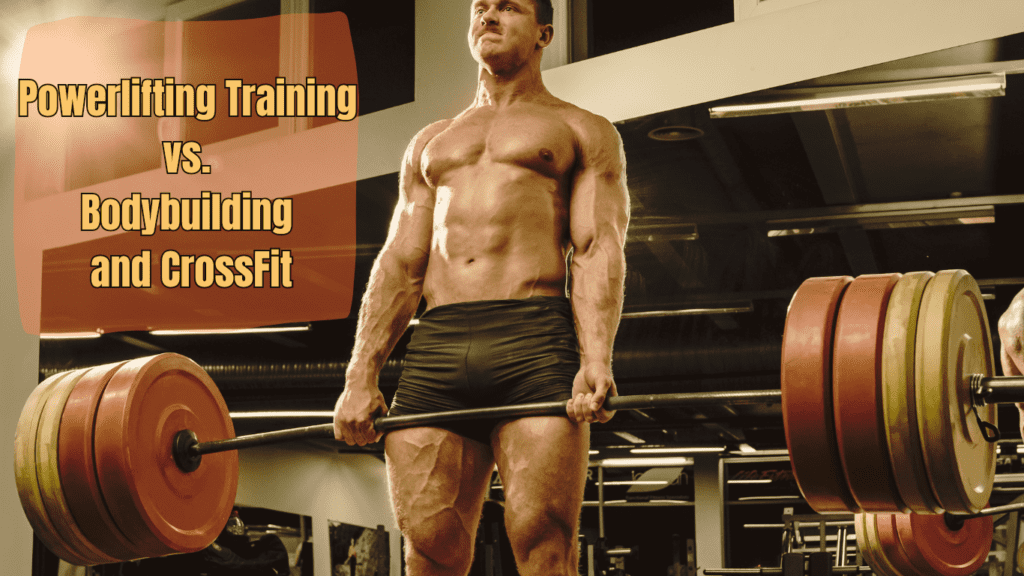Discover the Truth: Are Dance Workouts Effective?
So are dance workouts effective?
It was just a typical Tuesday morning when Sarah decided to try something new. Fed up with her monotonous gym routine, she stumbled upon a dance workout video online. Little did she know, this spontaneous decision would not only break the monotony but also revolutionize her entire fitness journey. Like Sarah, many people wonder, “Are dance workouts effective?” This article aims to delve deep into this question, providing a thorough exploration and analysis of the effectiveness of dance workouts.
Dance workouts have become increasingly popular in recent years, transcending from a niche fitness activity to a mainstream phenomenon. From Zumba classes in local gyms to online dance fitness programs, the variety and accessibility of dance workouts have made them a favorite among fitness enthusiasts of all ages. But the real question remains: are dance workouts effective in achieving fitness goals? In this article, we’ll explore the cardiovascular benefits, the impact on muscle tone and strength, the psychological advantages, and the overall calorie-burning potential of dance workouts.

First and foremost, one of the primary benefits of dance workouts is their cardiovascular impact. Dance workouts are known for getting the heart pumping and the blood flowing. Activities like hip-hop, salsa, and aerobic dance can significantly boost cardiovascular health. Regular participation in these workouts can lead to improved heart function, increased lung capacity, and better overall endurance. Studies have shown that engaging in dance workouts regularly can lower the risk of heart disease, high blood pressure, and type 2 diabetes, similar to other forms of aerobic exercise.
Another critical aspect to consider is the muscle tone and strength gained from dance workouts. While they may not involve heavy lifting or traditional resistance training, dance workouts can still be incredibly effective in building muscle strength and toning the body. Movements in dance require the engagement of various muscle groups, often simultaneously. This full-body engagement can lead to improved muscle tone, especially in areas like the legs, core, and arms. The repeated actions of jumping, twisting, and lifting during dance routines can also enhance muscle endurance and stability, contributing to a leaner and more sculpted physique.
The psychological benefits of dance workouts cannot be overstated. One of the reasons people stick with dance workouts is because they are genuinely fun and enjoyable. The combination of music, movement, and rhythm can elevate mood, reduce stress, and enhance overall mental well-being. Engaging in dance workouts can also boost self-confidence and body image, as participants often feel a sense of accomplishment and joy from mastering dance routines and moving their bodies freely. This positive impact on mental health makes dance workouts a sustainable and attractive option for many individuals.
Subscribe And Get Our Free E-Book:Unlocking The Power Of Nutrition-Supplements, Substitutes, and Superfoods!
Moreover, the calorie-burning potential of dance workouts is impressive. Depending on the intensity and duration, a dance workout session can burn a substantial number of calories. For instance, a vigorous Zumba class can burn between 400 to 600 calories per hour, comparable to running or cycling. This calorie-burning capability, combined with the engaging nature of dance, makes it an effective tool for weight management and fat loss. People looking to shed pounds can benefit greatly from incorporating dance workouts into their fitness regimen.
In conclusion, the question “Are dance workouts effective?” can be answered with a resounding yes. Dance workouts offer a unique blend of cardiovascular benefits, muscle toning, psychological advantages, and calorie-burning potential. They provide a holistic approach to fitness that can cater to a wide range of individuals, from beginners to advanced fitness enthusiasts. The enjoyment factor ensures that participants are more likely to stick with their routines, making dance workouts a sustainable and effective way to achieve various fitness goals. As Sarah discovered, stepping out of the comfort zone and trying something new like a dance workout can lead to remarkable and lasting changes in one’s fitness journey.
History and Evolution of Dance Workouts
Dance as a form of exercise has a rich and vibrant history that dates back centuries. Originating in ancient civilizations, dance was not only a means of artistic expression but also a way to maintain physical health. Are dance workouts effective? They have been since these early times, offering a dynamic method to stay fit. In ancient Greece, dance was integrated into daily life and was considered crucial for physical training, especially for soldiers. The Greeks believed that dance enhanced agility, coordination, and overall physical fitness. Similarly, in other cultures around the world, dance was used in rituals and celebrations, often involving vigorous movements that provided a full-body workout.
The evolution of dance as a structured form of exercise began to take shape in the 20th century. One of the earliest forms of dance-based fitness was Jazzercise, created by Judi Sheppard Missett in 1969. Jazzercise combined jazz dance, resistance training, Pilates, yoga, and kickboxing movements into one comprehensive workout. This innovative approach made fitness fun and accessible, especially for those who found traditional exercise routines monotonous. The success of Jazzercise paved the way for future dance workout programs, establishing a new genre of exercise that emphasized enjoyment and community.
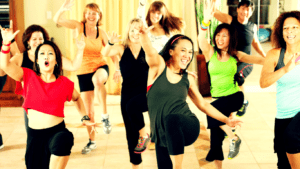
In the 1990s, dance workouts took another leap forward with the introduction of Zumba. Created by Colombian dancer and choreographer Alberto “Beto” Perez, Zumba revolutionized the fitness industry by blending Latin dance rhythms with aerobic exercise. Zumba classes quickly gained popularity worldwide due to their high-energy atmosphere and inclusive nature. The program’s catchy music and easy-to-follow choreography made it appealing to people of all fitness levels. As a result, many started to ask, are dance workouts effective? The overwhelming response from Zumba enthusiasts was a resounding yes, as they experienced significant improvements in their fitness and overall well-being.
As technology advanced, so did the accessibility and variety of dance workouts. The rise of the internet and digital platforms has led to an explosion of modern online dance classes. Today, anyone with an internet connection can join a live dance workout session or follow pre-recorded routines from the comfort of their home. These online classes offer a diverse range of styles, from hip-hop and contemporary to Bollywood and African dance. The flexibility and convenience of online dance workouts have made them a popular choice, especially during times when in-person classes may not be feasible.
The continuous innovation in dance workouts has kept them relevant and effective. Programs now often incorporate elements from various fitness disciplines to enhance their effectiveness. For instance, some dance workouts integrate high-intensity interval training (HIIT) to maximize calorie burn and cardiovascular benefits. Others may include strength training exercises to improve muscle tone and build endurance. This fusion of dance with other fitness modalities ensures that dance workouts remain comprehensive and challenging, catering to a wide audience with diverse fitness goals.
The question, are dance workouts effective, is further validated by the scientific research supporting their benefits. Studies have shown that dance workouts can improve cardiovascular health, enhance muscular strength, and boost mental well-being. The rhythmic and repetitive nature of dance helps in building muscle memory and coordination, while the social aspect of group dance classes fosters a sense of community and motivation. Additionally, the enjoyment factor plays a significant role in adherence to a fitness routine, making dance workouts a sustainable option for long-term health benefits.
The history and evolution of dance workouts highlight their enduring appeal and effectiveness. From ancient rituals to modern online classes, dance has consistently been a powerful tool for maintaining physical health and emotional well-being. The journey from Jazzercise to Zumba and beyond demonstrates how dance workouts have adapted to changing times and preferences, ensuring they remain relevant and accessible. For those still wondering, are dance workouts effective, the answer lies in the centuries of practice, the millions of enthusiasts, and the scientific evidence backing their benefits. Dance workouts offer a unique and enjoyable way to achieve fitness goals, making them a valuable addition to anyone’s exercise regimen.
Types of Dance Workouts
Dance workouts come in a wide array of styles, each offering unique benefits and experiences. The variety ensures that there’s something for everyone, regardless of fitness level or personal preference. So, are dance workouts effective? Absolutely, and here’s a closer look at the different types to understand why.
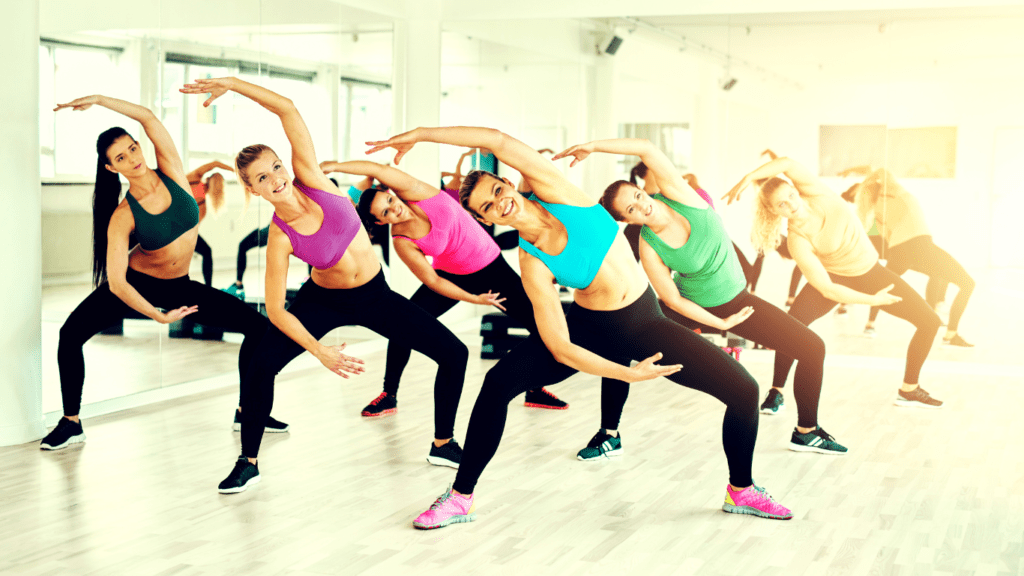
Aerobic dance workouts are some of the most popular and high-energy forms of dance-based exercise. Zumba, for example, is renowned for its lively atmosphere and infectious Latin rhythms. Participants move through a series of choreographed routines that combine fast and slow rhythms to create an effective cardio workout. Zumba’s appeal lies in its ability to make fitness feel like a party, encouraging people to stay active and engaged.
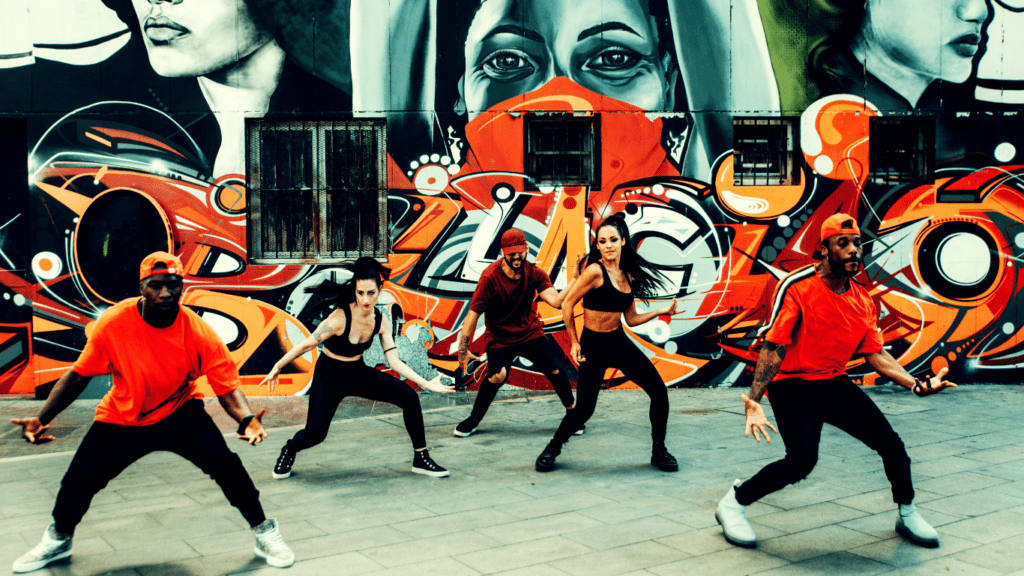
Similarly, Hip-Hop dance workouts bring a dynamic edge to aerobic exercise. These classes often feature street dance styles set to contemporary music, making them particularly appealing to younger audiences. The movements in hip-hop dance workouts are designed to be energetic and intense, helping to improve cardiovascular fitness, coordination, and agility.
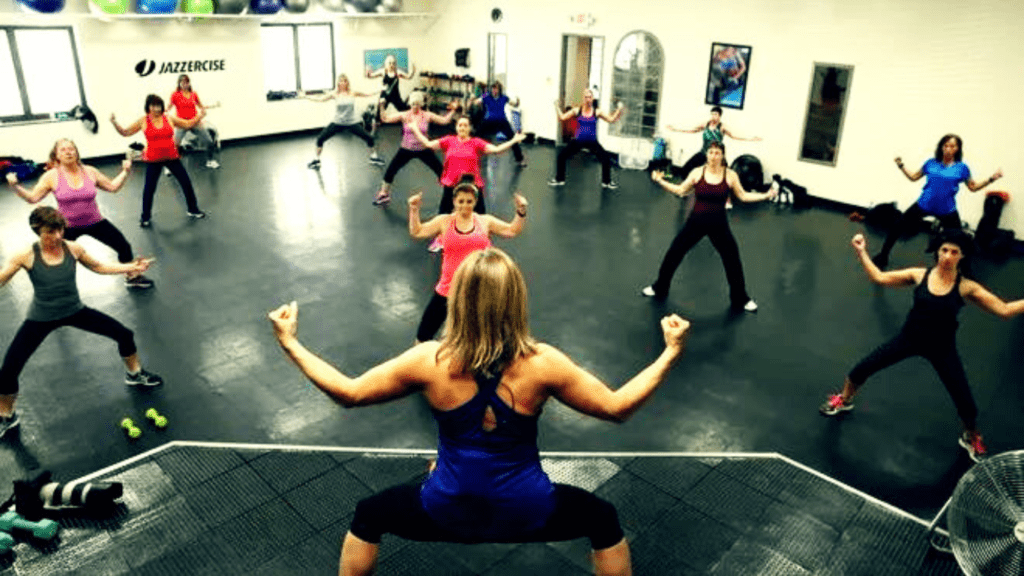
Jazzercise, one of the pioneers in dance fitness, continues to be a favorite. It blends jazz dance with strength training, Pilates, yoga, and kickboxing. The result is a comprehensive workout that not only gets the heart rate up but also tones muscles and improves flexibility. Jazzercise’s enduring popularity is a testament to its effectiveness and fun factor.
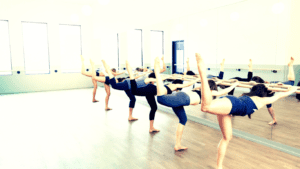
When it comes to strength and flexibility, dance workouts like ballet and barre stand out. Ballet-based fitness classes focus on controlled, precise movements that enhance muscle strength, particularly in the legs, core, and back. These workouts also emphasize flexibility and balance, essential components of overall fitness. Ballet-inspired workouts often incorporate elements of classical ballet technique, making them both challenging and elegant.

Barre workouts take inspiration from ballet, Pilates, and yoga. Using a ballet barre for support, participants perform a series of isometric movements and stretches that target small muscle groups. Barre workouts are known for their ability to sculpt and tone the body while improving posture and flexibility. They provide a low-impact yet highly effective workout, suitable for all fitness levels.

Cultural dances bring a rich diversity to the dance workout scene, incorporating traditional movements and music from around the world. Bollywood dance workouts, for example, draw from the vibrant, high-energy dance routines seen in Indian films. These workouts are a fantastic way to get a cardio workout while enjoying the lively rhythms and expressive movements characteristic of Bollywood dance.
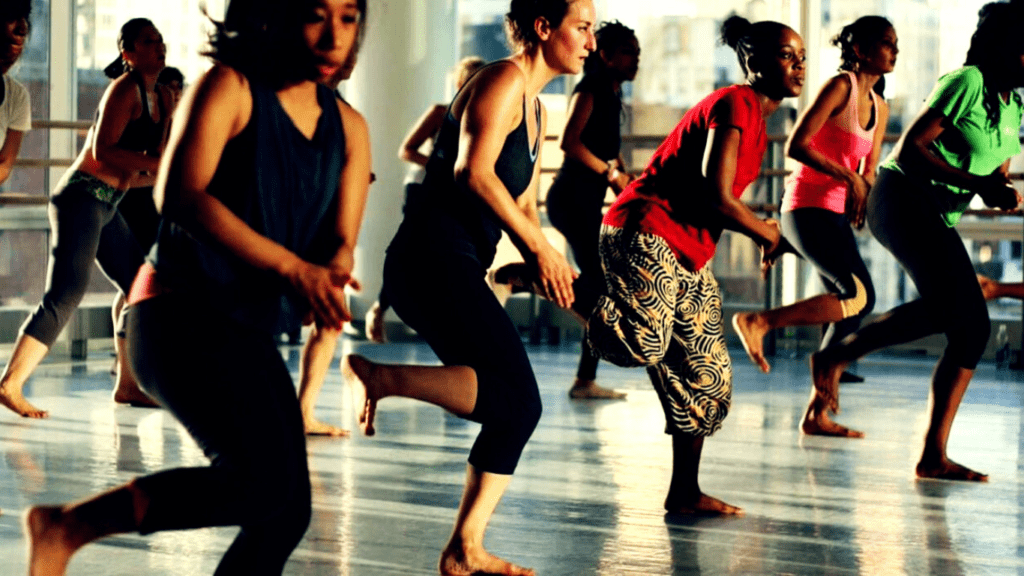
African dance workouts offer another culturally rich experience. These workouts typically involve rhythmic movements that engage the whole body, often accompanied by traditional African drumming. The energetic and communal nature of African dance makes it a powerful cardio workout that also improves coordination and rhythm.
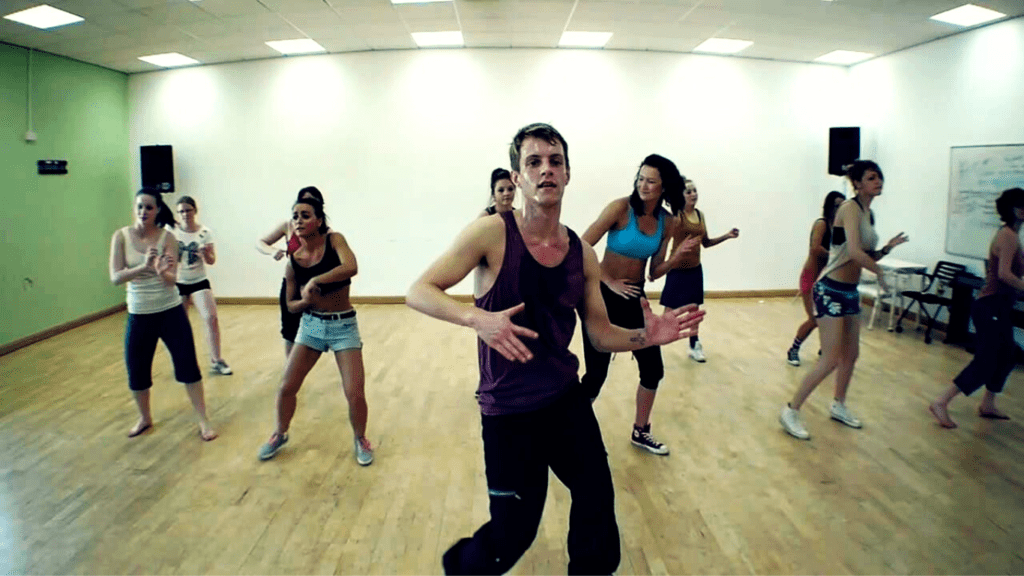
Latin dance workouts are incredibly popular, with styles such as salsa, merengue, and bachata being integrated into fitness routines. These dances are known for their passionate, rhythmic movements and provide an excellent cardio workout while also enhancing flexibility and coordination.

Hybrid dance workouts combine elements from different fitness disciplines to create a well-rounded exercise experience. Dance Yoga is one such example, blending the fluid movements of dance with the stretching and mindfulness of yoga. This combination helps to improve flexibility, balance, and mental clarity while also providing a gentle cardiovascular workout.

Cardio dance workouts are another hybrid, mixing dance routines with traditional cardio exercises. These workouts are designed to maximize calorie burn and improve cardiovascular health while keeping participants engaged with fun and varied dance moves. The fusion of high-energy dance and aerobic exercises ensures that the workout is both effective and enjoyable.
So, are dance workouts effective? They certainly are, thanks to their ability to cater to different fitness needs and preferences. Whether you’re looking for a high-energy cardio session, a strength and flexibility routine, or a culturally immersive experience, there’s a dance workout that’s right for you. The key is to find a style that you enjoy, as this will keep you motivated and consistent in your fitness journey.
Dance workouts offer a unique blend of physical and mental benefits. They improve cardiovascular health, build muscle tone, enhance flexibility, and boost mood. The social aspect of group dance classes can also provide a sense of community and support, making it easier to stay committed to your fitness goals.
The variety of dance workouts available means that there’s something for everyone. From the high-energy moves of Zumba and hip-hop to the strength-building techniques of ballet and barre, and the cultural richness of Bollywood and African dance, the options are endless. Hybrid workouts like Dance Yoga and Cardio Dance further expand the possibilities, ensuring that dance workouts remain engaging and effective. So, are dance workouts effective? The answer is a resounding yes, offering a fun and versatile way to stay fit and healthy.
Physical Benefits
Let’s delve into the physical benefits that make them a compelling choice for fitness enthusiasts of all levels.
Cardiovascular health is one of the primary advantages of incorporating dance into your fitness routine. Whether you’re salsa dancing, doing Zumba, or enjoying a hip-hop class, the continuous movement and elevated heart rate contribute to improved cardiovascular fitness. Engaging in regular dance workouts can help strengthen the heart muscle, enhance circulation, and lower blood pressure over time. The rhythmic nature of dance also supports better endurance, making everyday activities easier and less tiring.
Strength and toning are significant outcomes of regular participation in dance workouts. Many dance styles require you to engage multiple muscle groups simultaneously, leading to effective muscle toning and strengthening. Moves like jumps, turns, and lifts in dance routines target various muscles, including the core, legs, arms, and back. The repetition of these movements helps build muscle endurance and definition without the need for heavy weights or machines. This holistic approach to strength training through dance ensures a balanced and sculpted physique.
Flexibility and balance are essential components of overall fitness that dance workouts naturally enhance. Dance requires a wide range of motion, promoting flexibility in muscles and joints. Stretching exercises incorporated into dance warm-ups and routines further improve flexibility, making movements more fluid and reducing the risk of injuries. Moreover, dance workouts challenge and improve balance through coordinated movements and shifting body weight, leading to better stability and coordination in daily activities.
For those wondering about weight loss, dance workouts offer an effective solution. Calorie burn is a key factor in weight management, and dance workouts can be surprisingly effective in this regard. Depending on the intensity and duration of the session, dance workouts can burn a significant number of calories. High-energy dance styles like Zumba and hip-hop can burn as many calories as traditional aerobic exercises such as running or cycling. The combination of cardio movements and muscle engagement in dance not only burns calories during the workout but also boosts metabolism, leading to continued calorie burn post-exercise.
In conclusion, the physical benefits of dance workouts make them an attractive and effective choice for improving overall fitness. From enhancing cardiovascular health and strength to promoting flexibility, balance, and weight loss, dance workouts offer a comprehensive approach to achieving fitness goals. The dynamic and engaging nature of dance makes it easier to stay motivated and committed to regular exercise, contributing to long-term health and well-being.
Whether you’re looking to tone muscles, improve heart health, increase flexibility, or manage weight, dance workouts provide a versatile and enjoyable way to achieve your fitness objectives. Incorporating dance into your exercise regimen not only benefits your body but also uplifts your mood and spirit. So, are dance workouts effective for your physical health? Absolutely, and they continue to be a popular choice for those seeking a fun and rewarding path to better health.
Benefits of Different Dance Workout Styles Chart
| Dance Workout Style | Primary Benefits | Cardiovascular Health | Muscle Tone & Strength | Flexibility & Balance | Calorie Burning |
|---|---|---|---|---|---|
| Zumba | High-energy, fun, Latin rhythms | ⭐⭐⭐⭐⭐ | ⭐⭐⭐ | ⭐⭐⭐ | ⭐⭐⭐⭐⭐ |
| Hip-Hop | Energetic, modern, street dance moves | ⭐⭐⭐⭐⭐ | ⭐⭐⭐⭐ | ⭐⭐⭐ | ⭐⭐⭐⭐⭐ |
| Jazzercise | Jazz dance with strength training | ⭐⭐⭐⭐ | ⭐⭐⭐⭐ | ⭐⭐⭐ | ⭐⭐⭐⭐ |
| Ballet | Controlled, precise movements | ⭐⭐⭐ | ⭐⭐⭐⭐⭐ | ⭐⭐⭐⭐⭐ | ⭐⭐ |
| Barre | Ballet-inspired, small muscle focus | ⭐⭐⭐ | ⭐⭐⭐⭐⭐ | ⭐⭐⭐⭐⭐ | ⭐⭐ |
| Bollywood | Vibrant, high-energy Indian dance | ⭐⭐⭐⭐⭐ | ⭐⭐⭐ | ⭐⭐⭐ | ⭐⭐⭐⭐ |
| African Dance | Rhythmic, full-body, traditional movements | ⭐⭐⭐⭐⭐ | ⭐⭐⭐⭐ | ⭐⭐⭐ | ⭐⭐⭐⭐ |
| Latin Dance | Passionate, rhythmic movements | ⭐⭐⭐⭐⭐ | ⭐⭐⭐ | ⭐⭐⭐ | ⭐⭐⭐⭐ |
| Dance Yoga | Dance with stretching and mindfulness | ⭐⭐⭐ | ⭐⭐ | ⭐⭐⭐⭐⭐ | ⭐⭐ |
| Cardio Dance | High-energy dance mixed with cardio | ⭐⭐⭐⭐⭐ | ⭐⭐⭐ | ⭐⭐ | ⭐⭐⭐⭐⭐ |
Chart Analysis:
- Zumba and Hip-Hop are excellent for cardiovascular health and calorie burning due to their high-energy routines.
- Jazzercise and African Dance provide a balanced mix of cardiovascular benefits, muscle tone, and calorie burning.
- Ballet and Barre are superior for muscle tone and flexibility, making them ideal for those looking to enhance strength and balance.
- Bollywood Dance and Latin Dance offer a vibrant, culturally rich experience with notable benefits for cardiovascular health and calorie burning.
- Dance Yoga focuses on flexibility and mindfulness, providing a holistic approach to fitness.
- Cardio Dance combines dance with traditional aerobic exercises, maximizing calorie burn and cardiovascular benefits.
Mental and Emotional Benefits
Are dance workouts effective for anything more then the body? Beyond their physical benefits, dance workouts offer profound mental and emotional advantages that contribute to overall well-being.
Stress relief is one of the immediate benefits of dance workouts. Moving to music and focusing on rhythmic patterns can help reduce cortisol levels, the hormone associated with stress. Engaging in dance releases endorphins, neurotransmitters that promote feelings of happiness and relaxation. This combination of physical activity and music therapy can effectively alleviate tension and anxiety, providing a natural and enjoyable way to unwind after a long day.
Furthermore, dance workouts have a positive impact on cognitive function and brain health. Learning new dance routines challenges the brain and improves cognitive abilities such as memory, concentration, and multitasking. The coordination required in dance movements stimulates neural pathways and enhances neuroplasticity, the brain’s ability to adapt and form new connections. Studies have shown that regular participation in dance can potentially reduce the risk of cognitive decline as we age, promoting long-term brain health.
The social connection fostered by dance workouts is another significant benefit. Group dance classes create a sense of community and camaraderie among participants. Sharing the experience of learning and mastering dance moves together builds friendships and social support networks. The supportive environment of a dance class encourages interaction and communication, helping individuals develop social skills and boost self-confidence. For many, the sense of belonging and shared achievement in a dance community enhances motivation and enjoyment of physical activity.
In summary, the mental and emotional benefits of dance workouts complement their physical advantages, making them a holistic approach to health and wellness. Whether you’re looking to reduce stress, enhance cognitive function, or foster social connections, dance workouts provide a multifaceted solution. The combination of movement, music, and social interaction creates a powerful therapeutic effect that promotes overall well-being.
Are dance workouts effective? Absolutely, as they offer a unique blend of physical exercise and mental relaxation. Incorporating dance into your fitness routine not only improves cardiovascular health, strengthens muscles, and enhances flexibility but also reduces stress levels, boosts cognitive function, and fosters social connections. These comprehensive benefits make dance workouts a valuable addition to a healthy lifestyle, appealing to individuals of all ages and fitness levels.
The joy of dancing transcends mere exercise; it becomes a form of self-expression and celebration. Whether you’re twirling to a salsa beat, grooving to hip-hop rhythms, or gracefully moving through a ballet routine, dance allows you to connect with your body and emotions in a meaningful way. This mind-body connection is at the heart of why dance workouts are effective—they nurture both physical vitality and emotional well-being.
For those seeking a fun, dynamic, and rewarding way to improve their overall health, dance workouts offer an inclusive and accessible option. Whether you’re a beginner taking your first steps or a seasoned dancer looking to refine your skills, the benefits of dance extend far beyond the studio floor. Are dance workouts effective? Absolutely, and they continue to inspire individuals worldwide to move, groove, and thrive in their pursuit of a healthier, happier life.
Comparing Them to Other Forms of Exercise
Are dance workouts effective when compared to other forms of exercise? Let’s explore how they measure up in terms of efficiency, enjoyment, and accessibility.
Efficiency is a crucial aspect to consider when evaluating the effectiveness of exercise. Dance workouts offer a comprehensive cardiovascular workout that can rival traditional forms of cardio like running or cycling. The intensity of dance movements, especially in high-energy styles like Zumba or hip-hop, can lead to significant calorie burn. Depending on the intensity and duration of the session, dance workouts can burn as many calories as other aerobic activities. Moreover, dance engages multiple muscle groups simultaneously, providing a full-body workout that targets both cardiovascular fitness and muscular endurance.
When it comes to variety and enjoyment, dance workouts excel in keeping fitness routines interesting and engaging. Unlike repetitive motions on a treadmill or stationary bike, dance allows for creative expression through movement. The rhythmic patterns and music in dance workouts not only elevate mood but also make exercise more enjoyable. This enjoyment factor plays a crucial role in maintaining a consistent workout routine. People are more likely to stick with an exercise program that they find fun and fulfilling, which is why dance workouts appeal to a broad range of individuals with diverse fitness goals and preferences.
Accessibility is another advantage of dance workouts. Unlike some forms of exercise that require specific equipment or facilities, dance can be performed virtually anywhere with minimal equipment. Many dance workouts can be done at home using online tutorials or DVDs, eliminating the need for a gym membership or specialized gear. This accessibility makes dance a convenient option for those with busy schedules or limited access to fitness centers. Moreover, the adaptability of dance routines allows individuals to modify movements based on their fitness level or physical limitations, ensuring inclusivity and safety.
In comparison to traditional gym workouts or outdoor activities, dance workouts offer a blend of physical benefits and mental stimulation. The rhythmic nature of dance enhances coordination, balance, and flexibility while promoting cardiovascular health and muscular strength. Are dance workouts effective? Absolutely, as they provide a dynamic and versatile approach to achieving fitness goals.
The variety of dance styles available ensures that there’s something for everyone, whether you prefer salsa, ballet, or contemporary dance. Each style offers unique challenges and rewards, encouraging individuals to explore different movement patterns and techniques. This diversity not only keeps workouts interesting but also allows for continual progression and skill development.
In summary, dance workouts stand out for their effectiveness, enjoyment, and accessibility. They provide a holistic approach to fitness that integrates physical activity with mental well-being. Whether you’re looking to burn calories, improve cardiovascular health, or simply have fun while exercising, dance workouts offer a compelling alternative to traditional forms of exercise.
Are dance workouts effective when compared to other forms of exercise? The answer lies in their ability to combine fitness with creativity, making them a sustainable and enjoyable way to stay active. By embracing the joy of movement and rhythm, dance workouts empower individuals to achieve their fitness goals while embracing a healthy and balanced lifestyle.
Comparison of Dance Workouts and Other Forms of Exercise Chart
| Benefit | Dance Workouts | Running | Cycling | Weightlifting |
|---|---|---|---|---|
| Cardiovascular Health | Excellent, especially in high-energy forms like Zumba | Excellent | Excellent | Moderate |
| Muscle Toning | Good, engages multiple muscle groups | Moderate, primarily lower body | Good, primarily lower body | Excellent, targeted muscle training |
| Flexibility | Excellent, many styles emphasize stretching and range of motion | Moderate | Low | Moderate |
| Cognitive Benefits | Excellent, improves memory and coordination through learning new routines | Low | Low | Moderate, through structured workouts |
| Stress Relief | Excellent, combines music and movement to release endorphins | Good, releases endorphins through physical exertion | Good, releases endorphins through physical exertion | Good, releases endorphins through physical exertion |
| Social Interaction | High, especially in group classes | Low | Low | Moderate, if done in a group setting |
| Enjoyment/Fun Factor | High, variety of styles and music | Moderate, depends on individual preference | Moderate, depends on individual preference | Moderate, depends on individual preference |
| Accessibility | High, can be done anywhere with minimal equipment | High, requires space to run | Moderate, requires bike and safe routes | Moderate, requires gym or equipment |
Practical Tips for Getting Started
Are dance workouts effective for beginners? Absolutely, and getting started is easier than you might think. Here are some practical tips to help you embark on your dance fitness journey.
Choosing the right style of dance workout is crucial, especially when starting out. Consider your fitness level, interests, and goals when selecting a dance style. High-energy styles like Zumba or hip-hop are great for those looking to burn calories and improve cardiovascular fitness while enjoying upbeat music and dynamic movements. If you prefer something more graceful and controlled, ballet-inspired workouts or barre classes focus on strength, flexibility, and posture. Explore different styles to find one that resonates with you and matches your fitness level.
Starting slow is key to building a solid foundation in dance fitness. Emphasize the importance of starting at a comfortable pace and gradually increasing intensity as your confidence and stamina grow. Many beginners find it helpful to begin with introductory classes or tutorials that focus on basic movements and techniques. This approach allows you to familiarize yourself with the rhythms and coordination required for dance without feeling overwhelmed. As you gain experience and improve your skills, you can challenge yourself with more advanced routines or longer sessions.
Consistency is key when starting any new fitness routine, including dance workouts. Commit to a regular schedule that allows you to practice and progress steadily. Aim for at least two to three sessions per week to maintain momentum and see results. Consistency not only improves physical fitness but also enhances muscle memory and coordination, making movements more natural and fluid over time. Set realistic goals for yourself, whether it’s mastering a specific dance routine, improving endurance, or simply enjoying the process of learning and moving.
Proper warm-up and cool-down routines are essential in dance workouts to prevent injuries and enhance performance. Begin each session with a gentle warm-up that includes stretching exercises to loosen muscles and increase flexibility. This prepares your body for the movements ahead and reduces the risk of strains or sprains. After your workout, take time to cool down with gradual stretches and deep breathing exercises to promote relaxation and muscle recovery. Incorporating these practices into your routine helps maintain overall flexibility and supports long-term fitness progress.
Focus on proper form and technique throughout your dance workouts to maximize effectiveness and minimize strain on your body. Pay attention to posture, alignment, and movement quality to ensure that you’re getting the most out of each exercise. If you’re unsure about correct technique, don’t hesitate to seek guidance from a qualified instructor or watch instructional videos online. Learning proper form from the beginning sets a solid foundation for future progress and reduces the risk of injury.
Stay motivated and engaged by mixing up your routines and exploring new dance styles or variations. Variety not only keeps workouts interesting but also challenges different muscle groups and prevents plateauing. Incorporate different genres of music, choreography styles, or themed classes into your routine to keep things fresh and exciting. Additionally, consider joining group dance classes or online communities where you can connect with others who share your passion for dance fitness. The social aspect of dancing with others can provide encouragement, support, and a sense of camaraderie.
Remember that progress takes time, patience, and perseverance. Celebrate small achievements along the way, whether it’s mastering a new dance move, increasing your stamina, or feeling more confident in your abilities. Each step forward, no matter how small, brings you closer to your fitness goals and reinforces the benefits of dance workouts.
Are dance workouts effective for beginners? Absolutely, and with the right approach and mindset, you can enjoy the physical, mental, and emotional rewards of dance fitness. Whether you’re looking to improve your cardiovascular health, build strength and flexibility, or simply have fun while exercising, dance offers a dynamic and enjoyable way to achieve your fitness goals. Start today, take it step by step, and discover the transformative power of dance in your life.
Common Misconceptions
Are dance workouts effective? Let’s address some common misconceptions that may overshadow their true benefits and effectiveness.
Myths surrounding dance workouts often undermine their credibility as effective forms of exercise. One prevalent myth is that dance workouts are “only for women.” While it’s true that dance fitness classes may have a higher proportion of female participants, dance is a universal form of movement that anyone can enjoy and benefit from, regardless of gender. Many professional athletes, including football players and basketball stars, incorporate dance into their training routines to improve agility, coordination, and overall fitness. Dance workouts are inclusive and can be tailored to accommodate various fitness levels and goals, making them accessible to everyone.
Another misconception is that dance workouts are “not a real workout” compared to traditional gym exercises like weightlifting or running. This myth stems from the misconception that exercise must be strenuous and high-impact to be effective. In reality, dance workouts can be highly effective in improving cardiovascular health, muscle tone, flexibility, and endurance. The intensity of dance movements can vary widely depending on the style and pace of the class. High-energy dance styles like Zumba or hip-hop can elevate heart rate and burn calories comparable to other forms of aerobic exercise. Moreover, dance engages multiple muscle groups simultaneously, offering a comprehensive full-body workout that combines strength, cardio, and flexibility training.
Clarifications help dispel these myths by providing factual information about the benefits and effectiveness of dance workouts. Scientific studies have demonstrated that dance can contribute to physical fitness and overall well-being in numerous ways. For instance, research has shown that regular participation in dance can improve cardiovascular health by increasing heart rate and improving circulation. Dance movements also promote muscle endurance and strength, particularly in the core, legs, and arms, through repetitive motions and resistance training.
Chappell Roan-Full Body Dance Workout Video
Furthermore, dance workouts enhance flexibility, coordination, and balance, which are essential components of functional fitness and injury prevention. The rhythmic patterns and dynamic movements in dance routines challenge the body’s ability to maintain equilibrium and control, leading to improvements in proprioception and spatial awareness. These benefits extend beyond physical fitness to encompass mental and emotional well-being, as dance has been shown to reduce stress, boost mood, and enhance cognitive function.
It’s important to recognize that dance workouts cater to diverse preferences and fitness goals. Whether you’re looking to burn calories, improve muscle tone, or simply enjoy the pleasure of movement, there’s a dance style and class format that can meet your needs. From traditional dance forms like ballet and salsa to modern fitness-oriented styles like barre and dance cardio, the variety of options ensures that everyone can find a dance workout that resonates with them.
Are dance workouts effective? Absolutely, and they offer a versatile and enjoyable approach to achieving and maintaining fitness. By debunking myths and providing factual information, we can appreciate dance as a valuable form of exercise that promotes physical health, mental well-being, and social connection. Whether you’re a beginner taking your first steps or a seasoned dancer looking to refine your skills, dance workouts provide a welcoming and supportive environment to explore movement, express creativity, and improve overall quality of life.
Are Dance Workouts Effective? Embracing Their Impact (Final Reflection)
Are dance workouts effective? Throughout this exploration, we’ve uncovered the myriad ways in which dance can transform your fitness journey and enhance your overall well-being. Let’s recap the key insights and motivations to inspire you to incorporate dance workouts into your life.
Firstly, physical benefits abound in dance workouts. From improving cardiovascular health and enhancing muscle tone to increasing flexibility and promoting weight management, dance offers a holistic approach to fitness. The rhythmic movements and varied styles cater to different fitness levels and goals, ensuring that everyone can find a dance workout that challenges and delights them.
Beyond physical fitness, dance workouts deliver significant mental and emotional rewards. They serve as potent stress relievers, lifting mood and boosting mental clarity through the release of endorphins. The cognitive demands of learning new choreography enhance brain function, memory retention, and overall cognitive agility. Engaging in dance fosters a sense of accomplishment and self-confidence as you master new skills and routines, empowering you both on and off the dance floor.
Social connection is another invaluable aspect of dance workouts. Whether you join a group class or participate in online communities, dancing brings people together in a supportive and uplifting environment. Sharing the joy of movement with others cultivates friendships, strengthens social bonds, and fosters a sense of belonging. The camaraderie and encouragement from fellow dancers create a positive feedback loop that motivates you to stay committed to your fitness goals.
Now, I challenge you to take the next step in your fitness journey by embracing dance workouts. Step out of your comfort zone, lace up your dance shoes, and let the music guide you towards a healthier, happier you. Whether you’re a seasoned dancer or a complete beginner, there’s a dance style waiting for you to explore its rhythms and movements.
Imagine the thrill of mastering a new dance routine, the exhilaration of pushing your physical limits, and the satisfaction of achieving your fitness goals through sheer joy and passion. Dance workouts offer not just a way to stay fit, but a pathway to personal growth, creativity, and self-expression.
So, why wait? Start today. Find a local dance studio, join an online class, or simply clear a space in your living room and dance like nobody’s watching. Let the infectious energy of dance uplift your spirits, energize your body, and renew your zest for life.
I encourage you to share your own experiences with dance workouts. Whether you’ve discovered a newfound love for salsa, conquered your first hip-hop routine, or experienced a breakthrough in your fitness journey, your story can inspire others to embark on their own dance adventure.
Together, let’s celebrate the transformative power of dance workouts. Let’s redefine fitness as not just a routine, but a rhythm—a rhythm that moves us towards health, happiness, and fulfillment. Are dance workouts effective? Absolutely, and they await you with open arms to dance your way to a healthier, more vibrant life.
Join the dance revolution today and discover the magic of movement. Your body, mind, and soul will thank you for it. Let’s dance!


